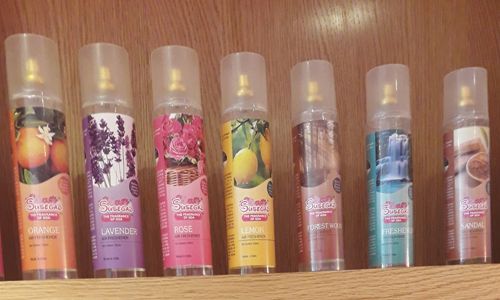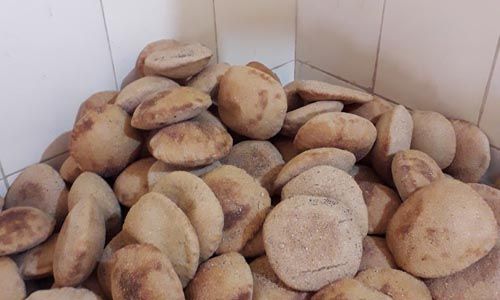Stopping at a bakery for some coffee and cake, again we run into a pleasant young man who has worked in Goa and who is very nostalgic. Manali is a far cry from Goa although tourism thrives in both. There's something about the blend of east and west in Goa that you cannot replicate anywhere.
April 15, 2013
Pushpa Iyengar
The best discovery we made about Manali was that almost everyone who works in the hotel industry there has done a stint in the hotel industry in Goa. In fact, there are people who shut shop during the winter months, when Manali freezes over to come to the sunny climes of Goa. Sunny, not just literally, but figuratively too because it’s the end of the year when tips are lavish, jobs are aplenty as Goa kicks into high gear and makes her annual date with bustling tourism.
Our first morning is serendipitous after the previous day's 10-hour grueling taxi journey from Chandigarh airport to Manali. Prakash, our pleasant waiter at Johnson's Hotel asks the inevitable -"where are you from?". "Goa", we say in unison, like true-blues. His eyes start to twinkle as he tells us he has worked at the 'Green Jacket' in Candolim for eight years. It's our turn to beam and exclaim delightedly as we say we had friends at that restaurant. And my companion instantly whips out his BB and dials Jerry D'Costa and puts him on the line to Prakash. They chat about old times and Prakash's day is made!
After that, Prakash is our Man Friday for the four days we are there including buying our stock of apricot/apple/plum/etc wine, serving us that extra glass of fruit juice at breakfast as he remembers the good times he had in Goa. Now that his children are older, he has decided to stay back in Manali and has become one of the cogs in the tourism industry's wheels.
Overrun with tourists
Manali is like any other hill station. Dirty in parts, over-populated with tourists, chock-a-block with hotels and expensive in the so-called 'mall' which is just a clutch of shops selling bric-a-brac on narrow streets criss-crossing the main street. Things that you don't really need but buy anyway because you are in an expansive mood, and so is your wallet. For instance, we pick up jam made of fruits because the English-speaking salesman is savvy when it comes to hard selling and takes you through an elaborate tasting ritual. We come back to the room and discover that the fruit jam is actually bottled in Bangalore and not Manali! So stick to all those apples, peaches, apricots and plums especially at stalls on the roads in Himachal as you journey through because if you have come from Goa or the south, they are dirt cheap and you are tempted to buy boxfuls. We did and ended up throwing out some later because there are only so many peaches and plums you can eat!
Stopping at a bakery for some coffee and cake, again we run into a pleasant young man who has worked in Goa and who is very nostalgic. Manali is a far cry from Goa although tourism thrives in both. There's something about the blend of east and west in Goa that you cannot replicate anywhere. Even the trout that Manali is famous for, my companion swears is no patch on the mackerels, pomfrets, crabs and the other abundant seafood you get here. But if you are a vegetarian, Manali leaves Goa far behind in offering choices. The chef at our hotel, an Andhraite, who still does stints in a hotel in Goa's Anjuna, goes the extra mile to whip up something vegetarian.
 Pass the reality check
Pass the reality check
But going to Rohtang Pass the next morning is when reality the world of touts, scamsters out to part you from your money kicks in. We are told to make an early morning start and the driver picks us up. Before setting out from Goa, we have already paid the piper Rs 1,800 per head or so we think, till the driver drops us less than five km from the hotel and hands us over to another driver while he slips him some money, saying he is not skilled in mountain driving. Enroute, our new driver reveals after interrogation that the money he got was a far cry from the Rs 1,800 we had paid. A scam of its own and there are more in the making, just wait.
Imagine our surprise when the new driver has an Alto raised up with 'bushes' to increase the much-needed-here ground clearance and dinky as they come, as opposed to our bigger one! Then we are marched into an office and told we have to get togged out with snow suits and that will cost us Rs 200 more. We wrinkle our noses in disgust at the thought of wearing something so close to the skin that has not been washed for weeks and used prior by hundreds of tourists. Those at the office try to scare us into renting the suits but we stubbornly decline and get into our small car with a prayer.
The next scam (the third if haven't been counting) happens when we are 16 km from Rohtang Pass at Marhi. The driver says he has only been paid up to that point and if we have to go to the Pass, we have to hire a bigger more powerful vehicle. The comfort is that every tourist has been told the same story we discover when we talk to the others making a meal of steaming Maggi noodles. Yes, that's a favourite here and on every restaurant's menu in the middle of nowhere. We discover a board that says only those heading to Leh can go beyond this point after showing proof. Ding, ding, it hits us hard and fast, the many open restaurants serving piping hot noodles is proof that only a limited number of tourists (only those travelling to Leh and its residents are allowed through the Rohtang Pass). It's simple the Pass cannot take all of Manali's tourist carrying capacity at this time of year. Bottomline: Give Rohtang the passover.
We come back to the hotel and call our Goa and Delhi travel operators to tell them we have been scammed. Both make soothing noises, promising a Rohtang refund blah, blah. But what about Rohtang Pass? He offers a trip to Naggar in the Kullu-Manali valley to compensate us for feeling so cheated. Naggar houses the estate where Russian painter Nicholas Roerich lived and died. Nicholas was married to actress Devika Rani, who set up a trust which runs a museum of Roerich's works that ran into a huge controversy some years ago. There are 52 paintings there valued at Rs 100,00,00,000. The row ended last year after the Ministry of External Affairs suggested that the museum have an Indian and a Russian curator. Guess what, in any case, the museum was closed for a rather long lunch while tourists, including Russians hang around outside.
It's not all white water rafting
Lest you think, that Kullu-Manali is all about white water rafting on the river Beas which ambles along while you motor down or of tourists trying to cross the narrow river tied to cables in many parts, there is more to it. For instance, drivers in Goa can learn a thing or two from their counterparts there, they are calm at the wheel, skilled drivers and in no rush to get anywhere on the narrow but well maintained roads in this mountain region. A far cry indeed from the taxi drivers here who seem to be infected with road rage and who rush around honking furiously.
 Also worth mentioning is the Naggar castle with a panoramic view of hills and valleys covered in lush vegetation. This medieval Castle with wooden floors and staircases, built by Raja Sidh Singh of Kullu around 1460 A.D., has now been turned into a heritage hotel by Himachal Pradesh Tourism. It has a small museum, a restaurant and a temple downstairs and rooms upstairs with a view to die for. The Jana waterfall is avoidable if you have seen the amazing Dudhsagar falls and the 'rajma-chawal' which was one of the enticements that took us there should be given a wide berth unless you are willing to risk wayside food.
Also worth mentioning is the Naggar castle with a panoramic view of hills and valleys covered in lush vegetation. This medieval Castle with wooden floors and staircases, built by Raja Sidh Singh of Kullu around 1460 A.D., has now been turned into a heritage hotel by Himachal Pradesh Tourism. It has a small museum, a restaurant and a temple downstairs and rooms upstairs with a view to die for. The Jana waterfall is avoidable if you have seen the amazing Dudhsagar falls and the 'rajma-chawal' which was one of the enticements that took us there should be given a wide berth unless you are willing to risk wayside food.
But everywhere you go whether in Manali or on the road from this tourist town, there are a clutch of shops selling woolen wear which you should buy because they are quite cheap. On our final day, we decided to walk around now that we had seen Kullu (ho, hum), bought Kullu shawls and caps, eaten trout, and bought dry fruits. We say avoid the nano-like local almonds, they are just not worth the price for the size.
Don't believe everything you see
We headed to Dalhousie and found that picking hotels on the basis of websites should come with a warning, because the highly recommended Hotel Mount View was a) bang in the middle of the town's bus terminus, very noisy and not some sanctuary in the mountains b) getting to our room involved climbing steep steps that were made slippery with the rain and had aggressive monkeys sitting on banisters waiting to pounce on your bag and c) did not tell you that an entire wing had been shut down for renovation and therefore the sounds of banging, drilling and polishing were always there.
But the good news is that while Dalhousie was quite lousy, an hour past all the fancy schools and the army cantonment was Khajjar in the Chamba valley, which seemed as if a piece of Switzerland had been transplanted here. It has a vast meadow (you cannot see the weeds unless you are really looking) with a pond in the middle surrounded by dense forests and all brought home with crisp mountain hours. The bad news? The place is overrun with vendors, plastic bottles and is almost a mini-amusement park replete with a big plastic ball in which you can put your kid in and watch him roll around. Why is it that all tourist places think that's all travellers want to experience a few rides that can be had even in your neighbourhood? Are there no other ways to amuse your kids? But that's another story. As for us, we succumbed to the enticement of a photographer to take a picture post-card photo surrounded by the green hills and immersed in the meadow of green. A good memory to keep!



